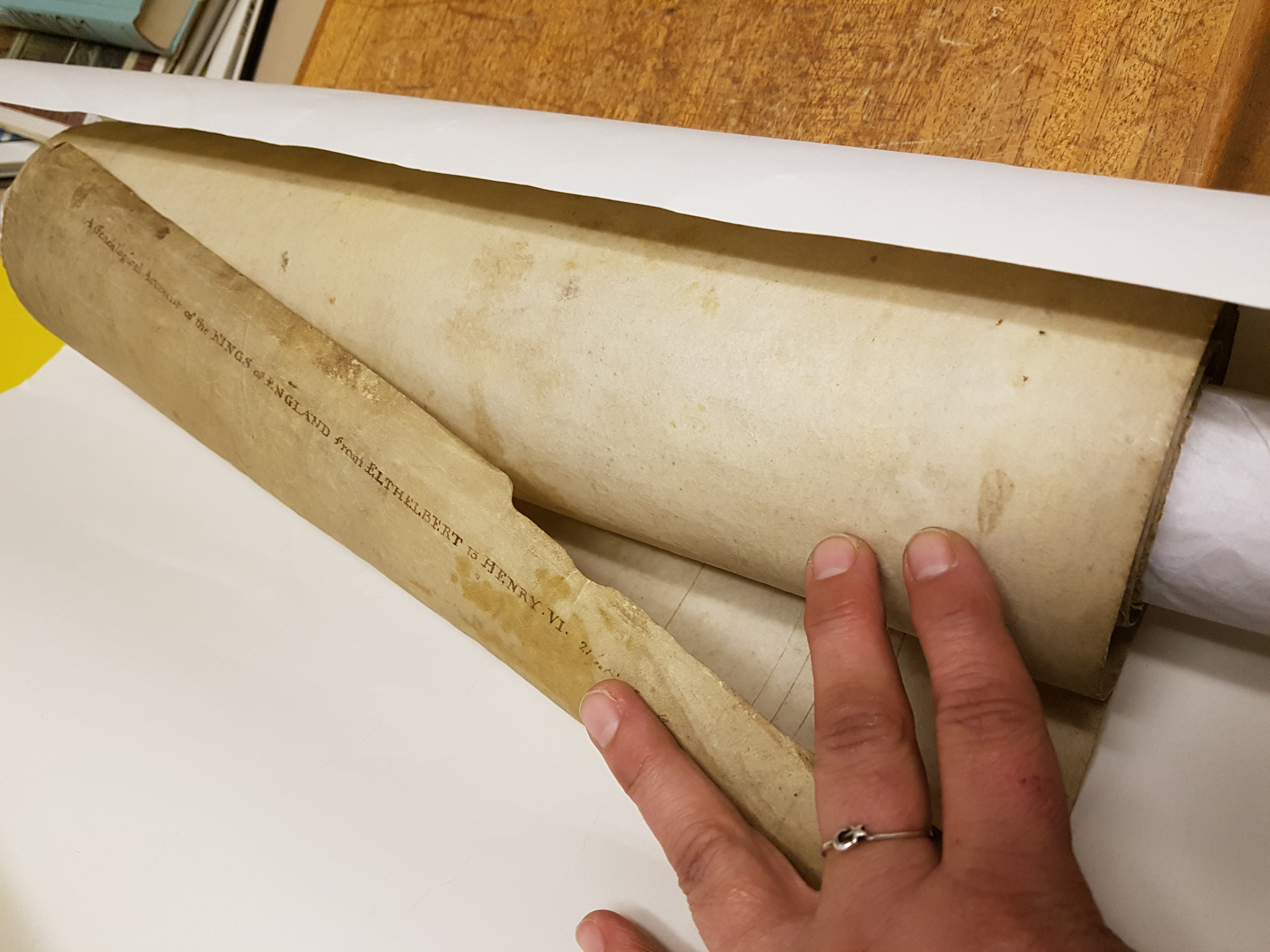
How does one scan a 21-foot scroll from the 15th century? Carefully, in short sections which are then digitally stitched together to form a whole representation of the original. This was my task over the past few workdays. Adding to the challenge was some significant damage and fading to the original and while every effort was made to preserve the colouring of the original artifact, I also chose to adjust the contrast in an effort to make some of the faded text passably readable on the screen.
Using our large format scanner (TTI/Betterlight) the scroll was placed on the deck, under glass. The weight of the glass holds the scroll flat and still during each eight-and-a-half minute scan. Weights (copper coated lead pellets enclosed in cotton) were placed behind the scroll that extended past the glass so that it would not roll off the deck. After each scan, the glass was lifted and the scroll re-positioned for the next scan. In total there were 13 scans of the front of the scroll and one to capture the text on the reverse at the foot of the scroll (seen in the photo above). The original scroll is comprised of “9 membranes [of parchment] attached by glue” and they vary slightly in size, here’s a detail showing one of the seams:

Once the scans were complete, the stitching began, piece by piece…

After pieces were stitched the colour bars were removed from the image and the white spaces replaced with black. The final stitched artifact is a huge 600 dpi TIFF of 2.3 GB, in this image you can see it at 1.9% of full size. You’ll note that there is an overall curve due to the way the software stitches the pieces together (in part due to the unevenness of the original) and you can also see the damage in the latter part of the scroll. The end piece is the verso scan which was tacked on to the end.

All told this piece took about 8 hours to complete: two hours to set up the scanning (physically and software settings), three and a half hours of scan time, and the remainder for stitching and tidying the images digitally.
The full size finished scans are beautifully clear however, and will definitely save on further wear and tear of the original:

The original is held in the UVic Libraries Special Collections and Archives. It is now available for viewing in sections online: English Pre-Reformation Genealogical Roll.
For more detail about the object: Genealogical Roll of English Kings and Events from Ethelbert to Henry VI, England (Canterbury), s. XV2
